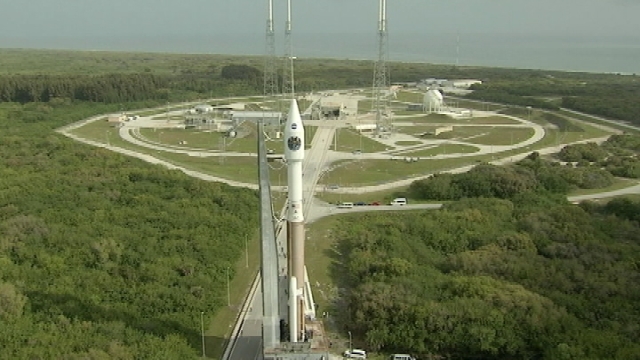A quartet of spacecraft weighing 1.2 tonnes settled into orbit after blasting off into space as planned. The unmanned Atlas rocket commonly known as Magnetospheric Multiscaleis a 20-story-tall rocket which was right on time as it soared into a clear late-night sky and as everyone cheered. The four spacecraft detached from each other an hour and a half later […]
A quartet of spacecraft weighing 1.2 tonnes settled into orbit after blasting off into space as planned. The unmanned Atlas rocket commonly known as Magnetospheric Multiscaleis a 20-story-tall rocket which was right on time as it soared into a clear late-night sky and as everyone cheered.
The four spacecraft detached from each other an hour and a half later and eased away on an easy motion. They will be flying in a pyramid formation which will be between 6 to 250 miles apart. This is expected to give a 3D view of the magnetic connection.
The observations made from the four of NASA’s Magnetospheric Multiscale have been placed on orbit. NASA has stated that they are expected to begin on an ambitious mission towards unlocking the secrets behind magnetic reconnection.
Alongside monitoring collisions from Earth’s magnetosphere and solar particles that will be arriving at a high speed, to form their own magnetic field, they will be expected to obtain three-dimensional images.
It is expected that scientists will have a lot to learn from this phenomenon referred to as magnetic reconnection which happens when there is a come together between the sun and the magnetic fields around the earth or even when they break apart and then come back together again. This is usually termed as an important driver of space weather events and as the process is repeated there is vast release of energy.
The mission to study observe and learn about the magnetic connection is expected to last for two years with a budget of $1.1 billion (£740 million).
“The findings from the magnetic connection understanding will be useful to the whole universe and we are hopeful that everyone one on earth and especially the space weather scientists will stand to benefit”. This is according to Craig Tooley who is NASA project manager and who added that none of them knows anything but they energetic enough to head into the mission.


Leave a Reply